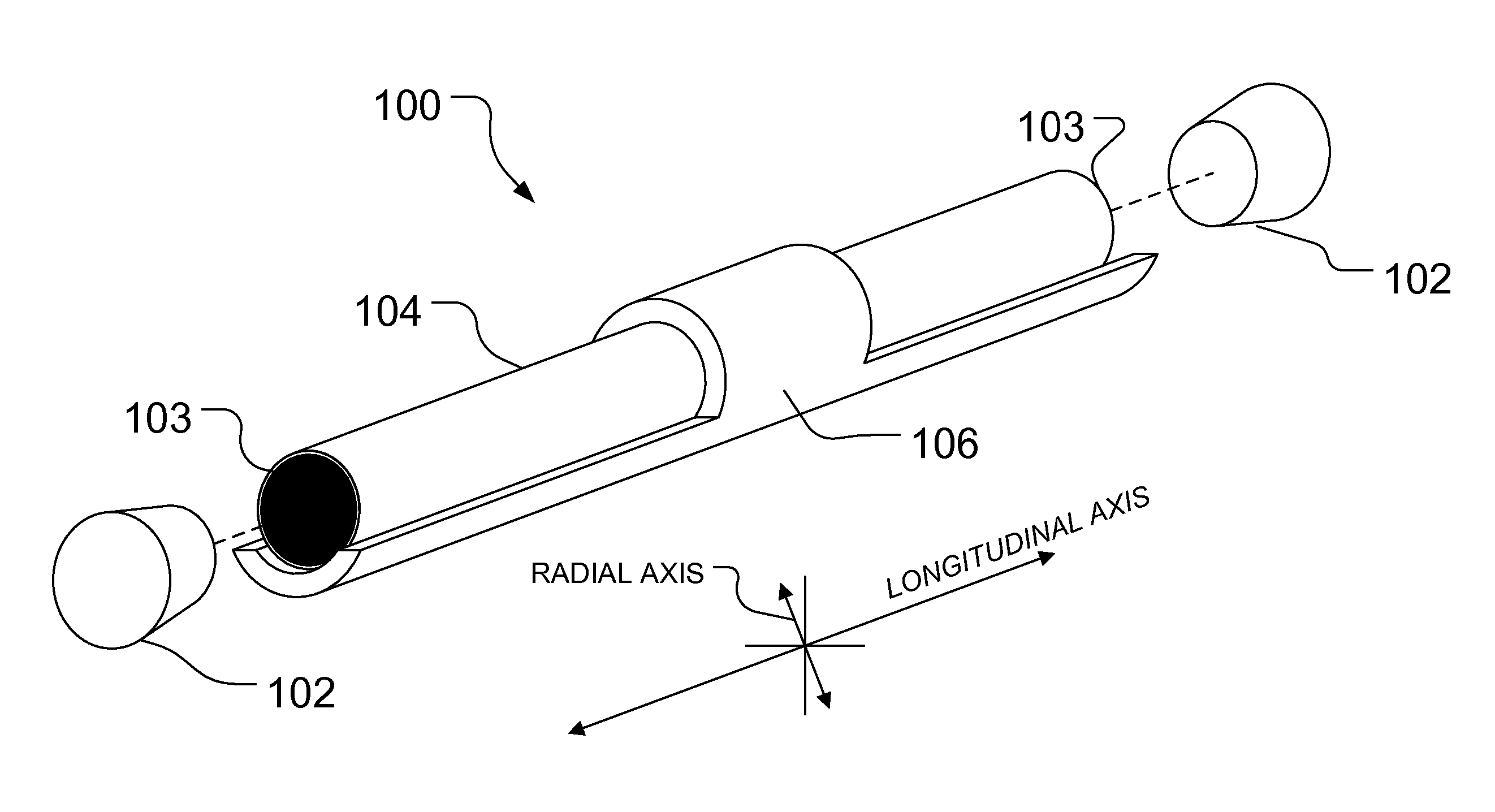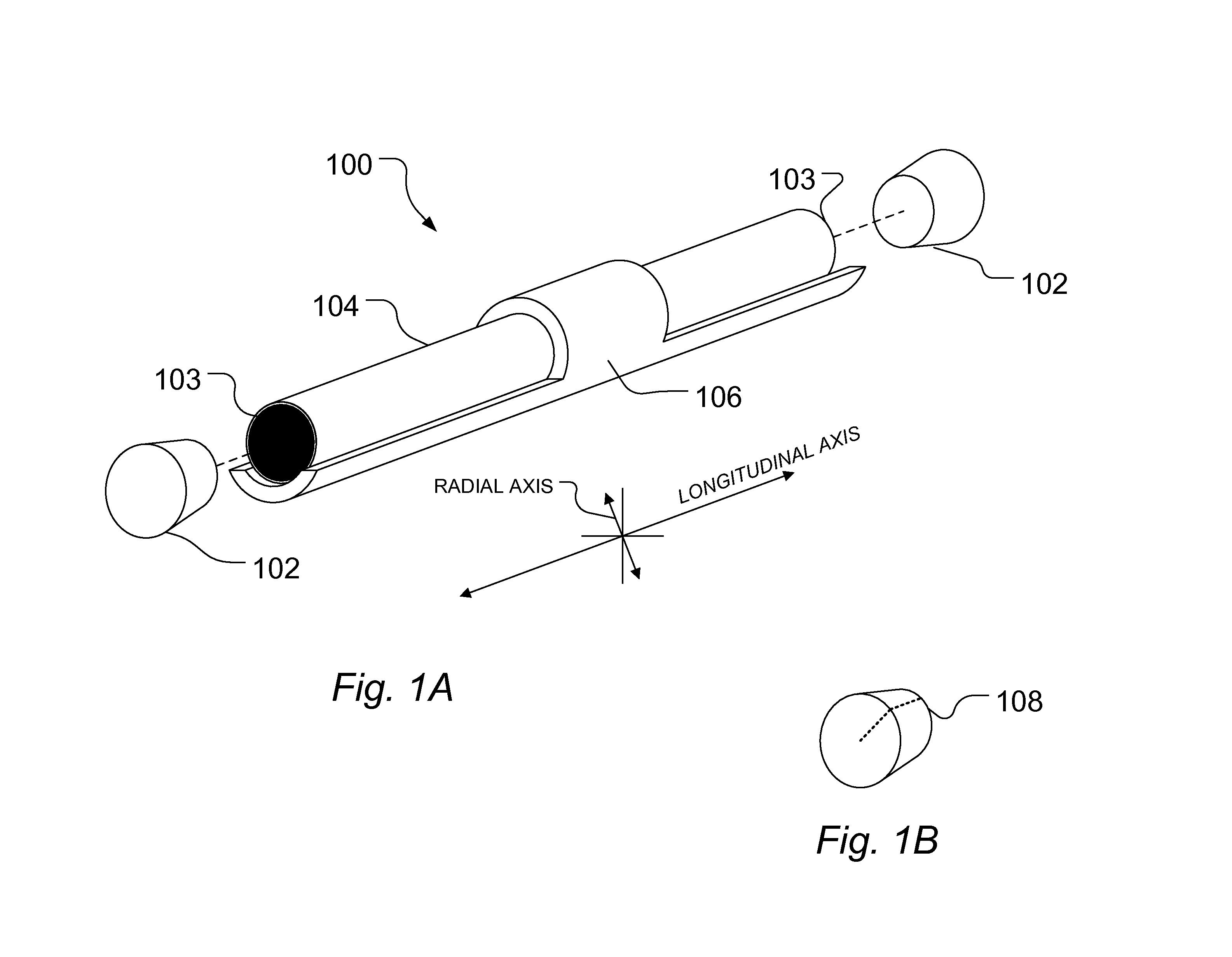Thermally Insulated Apparatus for Liquid Chromatographic Analysis
a liquid chromatographic analysis and thermal insulation technology, applied in mechanical apparatus, instruments, pipe elements, etc., can solve the problems of loss of resolution and peak broadening, failure to properly “pre-heat” the mobile phase, and compromise the overall efficacy of elevated temperature liquid chromatography, so as to reduce or eliminate the temperature gradient
- Summary
- Abstract
- Description
- Claims
- Application Information
AI Technical Summary
Benefits of technology
Problems solved by technology
Method used
Image
Examples
example 1
Construction of Thermally Insulated Cylindrical Apparatus
[0026] Several prototypes of the thermally insulated apparatus have been constructed as follows.
Prototype One:
[0027] Prototype one (1) was constructed by cutting a ⅞ inch diameter / width copper tube to 11½ inches length (McMaster-Carr Catalog #8967K85 Tubing size: ¾ inch, OD: ⅞ inch, ID: 0.811 inch, Wall: 0.032 inch. Liquid (quick dry) insulation plastic (Plastic Dip, Performix, multi-purpose rubber coating, blue) was applied to the entire tube and allowed to dry. Some of the insulation plastic was then cut away to allow the copper tube to have direct contact with the heating fins of an Agilent 1100 column compartment. By removing only the portions of plastic insulation that would allow metal-to-metal (e.g., metallic body of thermally insulated apparatus to heating fin) contact while keeping the remaining insulation in place, the tube was heated to the correct temperature (set point), and the insulating plastic kept the air...
example 2
Insulating Capacity and Temperature Stabilization of Prototypes 1-4
[0031] Prototypes 1-4 were constructed as described generally in Example 1. These prototypes were designed to fit an Agilent 1100 column compartment (see product performance specifications for more details, including column compartment dimensions, Agilent Technologies, Palo Alto, Calif.). The Agilent column compartment has two Peltier heater / cooling assemblies (a left and a right). Each one has four fins that protrude out and provide three shelves for the chromatographic columns to rest on. A large area having no heating block is located between the two Peltier assemblies. The liquid mobile phase first flows through the Peltier heater / cooling assembly, which equilibrates the liquid mobile phase to the set point temperature prior to entering the column. Even though the liquid mobile phase is heated before going through the column, the instability of the air and column temperature causes temperature gradients and unst...
PUM
| Property | Measurement | Unit |
|---|---|---|
| pore size | aaaaa | aaaaa |
| pore size | aaaaa | aaaaa |
| elevated temperature | aaaaa | aaaaa |
Abstract
Description
Claims
Application Information
 Login to View More
Login to View More - R&D Engineer
- R&D Manager
- IP Professional
- Industry Leading Data Capabilities
- Powerful AI technology
- Patent DNA Extraction
Browse by: Latest US Patents, China's latest patents, Technical Efficacy Thesaurus, Application Domain, Technology Topic, Popular Technical Reports.
© 2024 PatSnap. All rights reserved.Legal|Privacy policy|Modern Slavery Act Transparency Statement|Sitemap|About US| Contact US: help@patsnap.com









